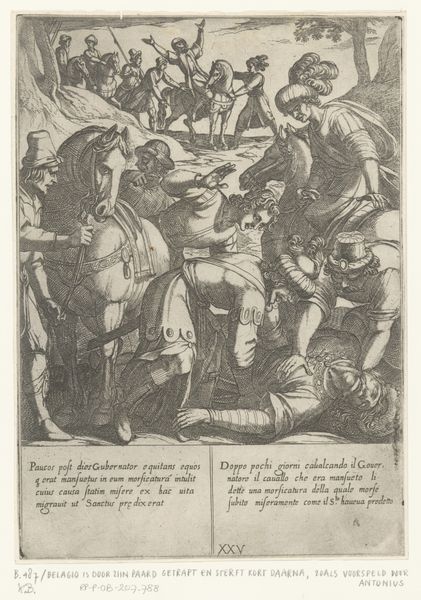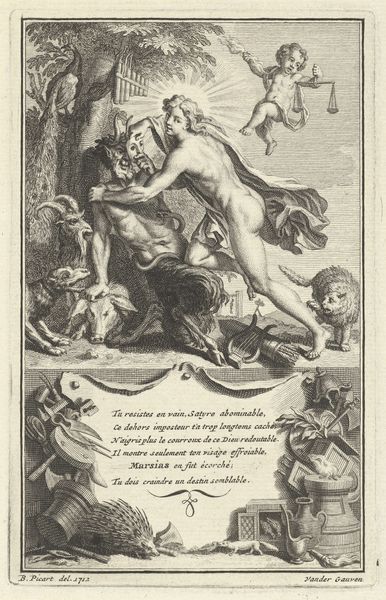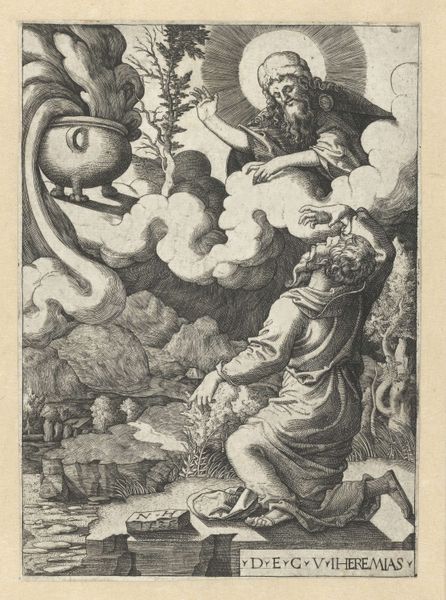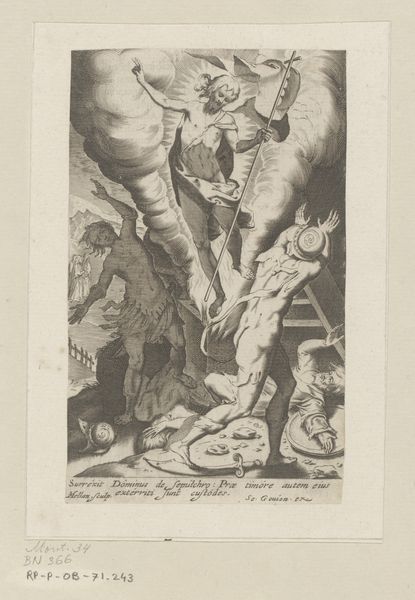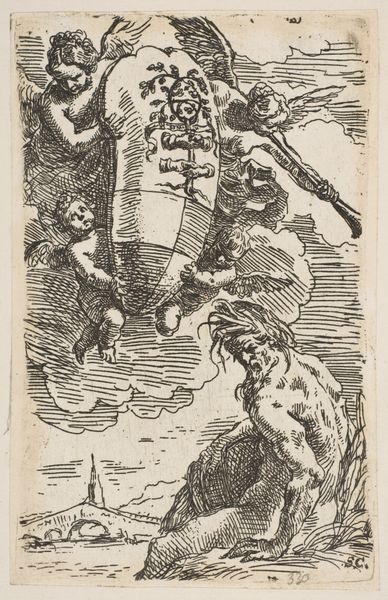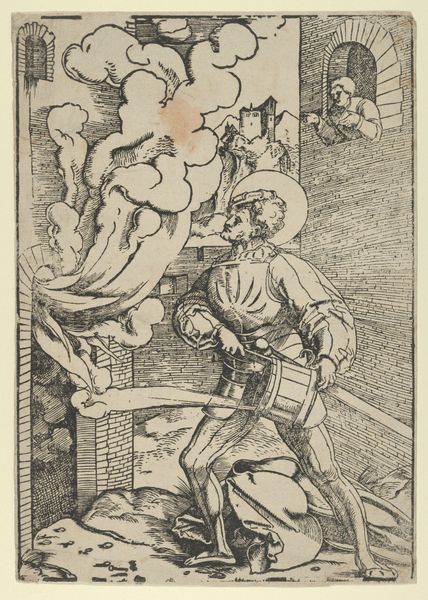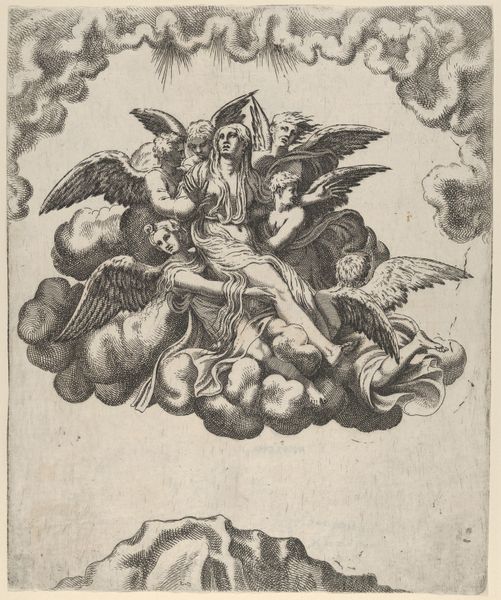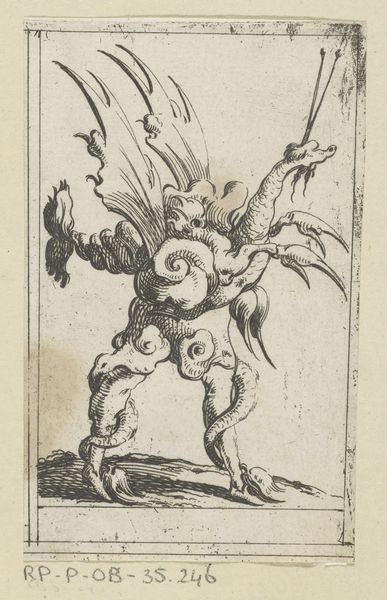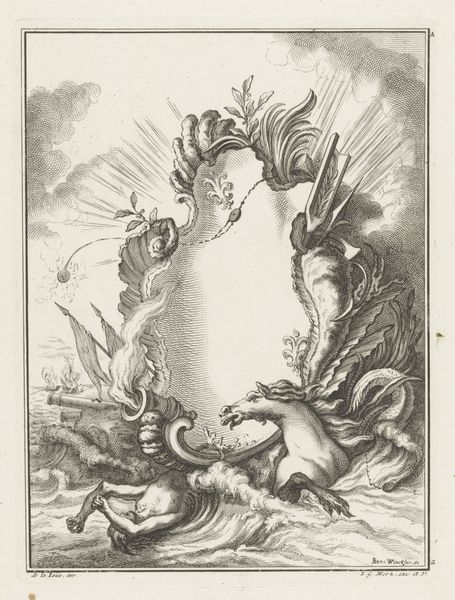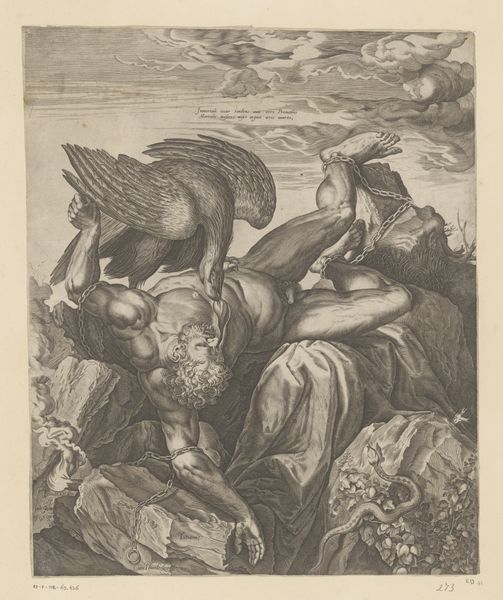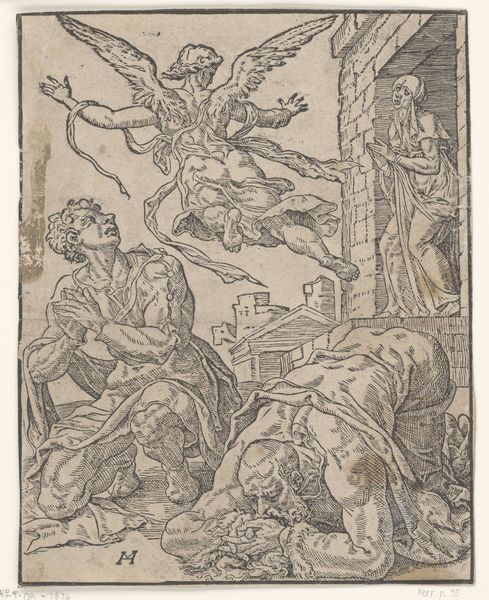
print, engraving
#
allegory
#
narrative-art
# print
#
mannerism
#
figuration
#
history-painting
#
italian-renaissance
#
engraving
#
erotic-art
Dimensions: height 231 mm, width 163 mm
Copyright: Rijks Museum: Open Domain
Editor: Here we have "Manden vlechtend daagt H. Antonius de demonen uit," or "Man weaving challenges the demons to St. Anthony," an engraving by Antonio Tempesta from 1598. The scene feels very crowded and chaotic, but all these strange figures are arranged in a very self-contained space. What’s your take? Curator: Note how Tempesta utilizes the formal elements of line and texture. The density of the engraving creates a complex visual field. Consider how the artist distributes tonal values to guide the viewer's eye. Is the narrative enhanced or obscured by this technique? Editor: I see the darker areas draw me to the demons attacking St. Anthony. But there’s a lot of detail everywhere else that keeps pulling my attention away. Does this diffusion create tension? Curator: Indeed. Notice how the artist has used contrasting lines to create a play of light and shadow. See the muscularity and contorted positioning of the monstrous forms and compare that to the calmness of the Saint, sitting passively? How does this comparison advance your formal interpretation? Editor: Now I’m focusing on how Saint Anthony's quietness makes the grotesque, agitated figures even more unsettling. I’m finding a dichotomy between stasis and kinesis! Curator: Exactly! And this print exemplifies Mannerist style in its emphasis on dynamism and artifice. What conclusions can we make regarding form, composition, and emotional effect? Editor: The busy composition, achieved through a dense network of lines and textures, mirrors the story's turmoil. Yet, Saint Anthony’s calm stillness contrasts and, in turn, amplifies that emotional charge. Curator: Precisely. Formal analysis offers a method to uncover deeper symbolic and narrative structures in artworks such as these!
Comments
No comments
Be the first to comment and join the conversation on the ultimate creative platform.

